1 在这里我们先来梳理一下 consumeGroup 的相关知识
1、首先,我们会给每个 consume 设置 groupId,对于相同 groupId 且订阅相同 topic 的 consume,会组成 consumeGroup,如图一所示
2、对于 Server 端的 topic 来说,会有 partition 这个概念,如图二所示
图二
3、现在我们有多个 consume 及多个 partition,到底由哪个 consume 来消费哪个 partition 呢?就由 consume 启动时的分区分配策略来决定。
在这里插入图片描述
2findCoordinator 流程展示
在这里插入图片描述
3 客户端源码分析
这里还是放一下 findCoordinator 的代码,看其他 consume 的代码就发现客户端跟 kafkaServer 通信的格式大多是这样的,如果通信一次发现该 GroupCoordinator 的信息还未获取到则继续重试,直到超时,这里的超时时间即为 poll 时传入的超时时间,这个时间设置贯穿了整个 consume 的运行代码。
protected synchronized boolean ensureCoordinatorReady(final Timer timer) { //如果还未加入group则与group通信 if (!coordinatorUnknown()) return true;
do { if (findCoordinatorException != null && !(findCoordinatorException instanceof RetriableException)) { final RuntimeException fatalException = findCoordinatorException; findCoordinatorException = null; throw fatalException; } final RequestFuture<Void> future = lookupCoordinator(); client.poll(future, timer); //如果还没回调完成则说明是超时的 if (!future.isDone()) { // ran out of time break; }
if (future.failed()) { if (future.isRetriable()) { log.debug("Coordinator discovery failed, refreshing metadata"); client.awaitMetadataUpdate(timer); } else throw future.exception(); //获取group的信息之后client会与group对应的节点建立连接,如果不可用则还会重试 } else if (coordinator != null && client.isUnavailable(coordinator)) { // we found the coordinator, but the connection has failed, so mark // it dead and backoff before retrying discovery markCoordinatorUnknown(); timer.sleep(rebalanceConfig.retryBackoffMs); } //如果与group通信成功则会跳出循环 } while (coordinatorUnknown() && timer.notExpired());
return !coordinatorUnknown(); }
复制代码
这里还有一点,跟踪代码可以看到以下代码在每次 check 以及与 Server 端通信完成之后都会有一样的逻辑,可以仔细思考一下,coordinator 即获取到的 group 节点对象,client.isUnavailable(coordinator)是在与 group 建立连接,每次判断 coordinator 不为空且 client 与 group 连接失败,则将 coordinator 置空,为什么会这样呢?很有可能是请求到 group 的信息之后发现该节点已下线或者不可用,此时服务端很有可能也在进行选举,所以我们需要将 coordinator 清空,待服务端选举完成后再次通信。
protected synchronized Node checkAndGetCoordinator() { if (coordinator != null && client.isUnavailable(coordinator)) { markCoordinatorUnknown(true); return null; } return this.coordinator; }
复制代码
org.apache.kafka.clients.consumer.internals.AbstractCoordinator#lookupCoordinator
这段代码有个亮点就是先寻找的负载最小节点,然后与该节点通信获取 group 节点的信息。
protected synchronized RequestFuture<Void> lookupCoordinator() { if (findCoordinatorFuture == null) { // find a node to ask about the coordinator //与最小负载的node通信 Node node = this.client.leastLoadedNode(); if (node == null) { log.debug("No broker available to send FindCoordinator request"); return RequestFuture.noBrokersAvailable(); } else { findCoordinatorFuture = sendFindCoordinatorRequest(node); // remember the exception even after the future is cleared so that // it can still be thrown by the ensureCoordinatorReady caller findCoordinatorFuture.addListener(new RequestFutureListener<Void>() { @Override public void onSuccess(Void value) {} // do nothing
@Override public void onFailure(RuntimeException e) { findCoordinatorException = e; } }); } } return findCoordinatorFuture; }
复制代码
org.apache.kafka.clients.NetworkClient#leastLoadedNode
我们先来看看是如何寻找负载最小节点的,这里代码还是挺讲究的,首先就是取随机数,防止每次都从第一个节点连接,如果判断没有在途的 request 则直接返回该节点,否则取在途 request 最小的节点,如果该节点不存在,则依次取连接的节点、需要重试的节点,如果找到不为 null 的节点则返回该节点,否则返回 null。
public Node leastLoadedNode(long now) { List<Node> nodes = this.metadataUpdater.fetchNodes(); if (nodes.isEmpty()) throw new IllegalStateException("There are no nodes in the Kafka cluster"); int inflight = Integer.MAX_VALUE;
Node foundConnecting = null; Node foundCanConnect = null; Node foundReady = null; //随机取一个节点 int offset = this.randOffset.nextInt(nodes.size()); for (int i = 0; i < nodes.size(); i++) { int idx = (offset + i) % nodes.size(); Node node = nodes.get(idx); //如果该节点是可连接的,且selector空闲,且发送队列空闲则可以发送请求 if (canSendRequest(node.idString(), now)) { //inFlightRequests记录了已发送请求但还未收到response的request,这里判定如果该节点没有这种数据则直接作为最小负载节点返回 int currInflight = this.inFlightRequests.count(node.idString()); if (currInflight == 0) { // if we find an established connection with no in-flight requests we can stop right away log.trace("Found least loaded node {} connected with no in-flight requests", node); return node; //否则取inFlightRequests中最小count的节点作为最小负载节点 } else if (currInflight < inflight) { // otherwise if this is the best we have found so far, record that inflight = currInflight; foundReady = node; } } else if (connectionStates.isPreparingConnection(node.idString())) { foundConnecting = node; } else if (canConnect(node, now)) { //如果该节点未被记录或者断连之后超过重试时间,则允许设置该节点 foundCanConnect = node; } else { log.trace("Removing node {} from least loaded node selection since it is neither ready " + "for sending or connecting", node); } }
// We prefer established connections if possible. Otherwise, we will wait for connections // which are being established before connecting to new nodes. //优先取状态良好的节点 if (foundReady != null) { log.trace("Found least loaded node {} with {} inflight requests", foundReady, inflight); return foundReady; } else if (foundConnecting != null) { log.trace("Found least loaded connecting node {}", foundConnecting); return foundConnecting; } else if (foundCanConnect != null) { log.trace("Found least loaded node {} with no active connection", foundCanConnect); return foundCanConnect; } else { log.trace("Least loaded node selection failed to find an available node"); return null; } }
复制代码
拆解 FindCoordinatorRequest
通过下图我们来看看发送了哪些数据,key_type 有两种枚举,一种是 GROUP,另一种是 TRANSACTION,如果 type 为 GROUP 的话那 key 就是 groupId
在这里插入图片描述
4 服务端源码分析
kafka.server.KafkaApis#handleFindCoordinatorRequest
服务端还是通过 KafkaApi 来处理请求,代码也比较简单。
def handleFindCoordinatorRequest(request: RequestChannel.Request): Unit = { val findCoordinatorRequest = request.body[FindCoordinatorRequest] //校验数据 //……省略部分代码 // get metadata (and create the topic if necessary) val (partition, topicMetadata) = CoordinatorType.forId(findCoordinatorRequest.data.keyType) match { case CoordinatorType.GROUP => //4.1 找到对应发分区 val partition = groupCoordinator.partitionFor(findCoordinatorRequest.data.key) //4.2 获取对应的元数据 val metadata = getOrCreateInternalTopic(GROUP_METADATA_TOPIC_NAME, request.context.listenerName) (partition, metadata)
case CoordinatorType.TRANSACTION => val partition = txnCoordinator.partitionFor(findCoordinatorRequest.data.key) val metadata = getOrCreateInternalTopic(TRANSACTION_STATE_TOPIC_NAME, request.context.listenerName) (partition, metadata)
case _ => throw new InvalidRequestException("Unknown coordinator type in FindCoordinator request") } //组装返回参数 //……省略部分代码 } }
复制代码
kafka.coordinator.group.GroupMetadataManager#partitionFor
我们知道 consume 消费后对应的位点是保存在 kafka 的内部名为"__consumer_offsets"的内置 topic 中,内置 topic 初始化时由offsets.topic.num.partitions 参数来决定分区数,默认值是 50,相同 consumeGroup 的 offset 最终会保存在其中一个分区中,而保存在哪个分区就由下面这段代码来决定,可以看到逻辑很简单,就是取 groupId 的 hashCode,然后对总的分区数取模。比如 groupId 为"consume_group",最终就会在 34 号分区保存位点。
def partitionFor(groupId: String): Int = Utils.abs(groupId.hashCode) % groupMetadataTopicPartitionCount
复制代码
kafka.server.KafkaApis#getOrCreateInternalTopic
这里是先从当前 node 的元数据缓存中拿到对应 topic 的数据,如果没有,则创建。从这段代码也可以猜想 kafka 内置 topic 的创建原理,是一种懒加载的思想,当第一个 consume 接入之后才会创建对应 topicPartition 文件。
private def getOrCreateInternalTopic(topic: String, listenerName: ListenerName): MetadataResponse.TopicMetadata = { val topicMetadata = metadataCache.getTopicMetadata(Set(topic), listenerName) topicMetadata.headOption.getOrElse(createInternalTopic(topic)) }
复制代码
这里的 topicMetadata 就是对应入参 topic 返回类似列表的对象,因为入参只有一个 topic,所以直接取第一个数据,数据结构见下图,可以更直观的理解返回参数。
在这里插入图片描述
在这里插入图片描述
kafka.server.KafkaApis#createTopic
Topic 创建的流程如下图所示,详情请看 Topic创建流程源码分析
拆解 FindCoordinatorResponse
通过下图我们来看看返回了哪些数据,可以看到前面取了很多数据,最终拼到返回参数里面的只有 leader 所在的节点信息
在这里插入图片描述
5 总结
这块代码本身不是很复杂,主要是有一些细节需要考虑,通过仔细思量这些细节对我们今后分析 consume 异常会大有好处。流程总结如下 1、寻找最小负载节点信息 2、向最小负载节点发送 FindCoordinatorRequest3、最小负载节点处理该请求。
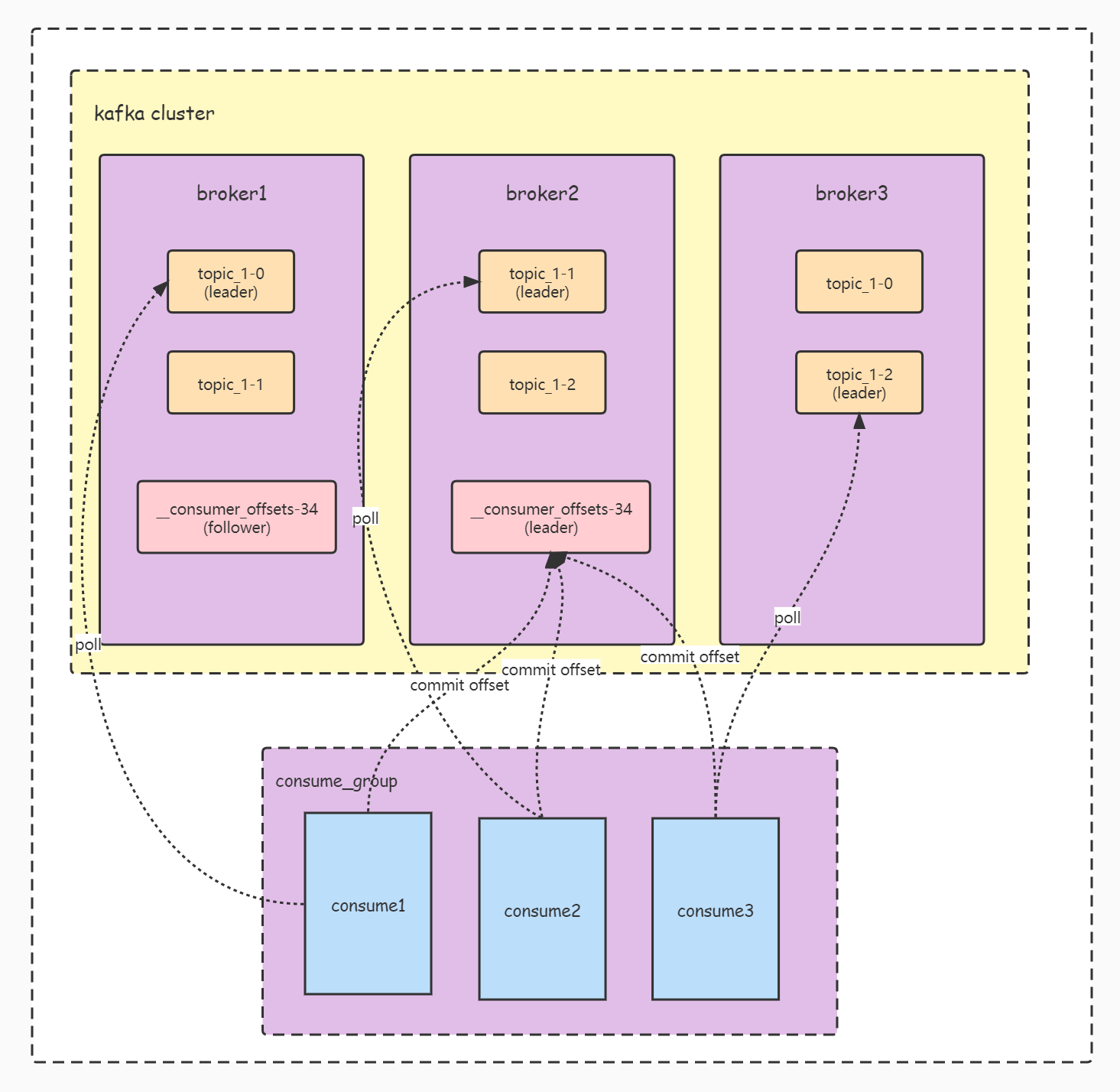
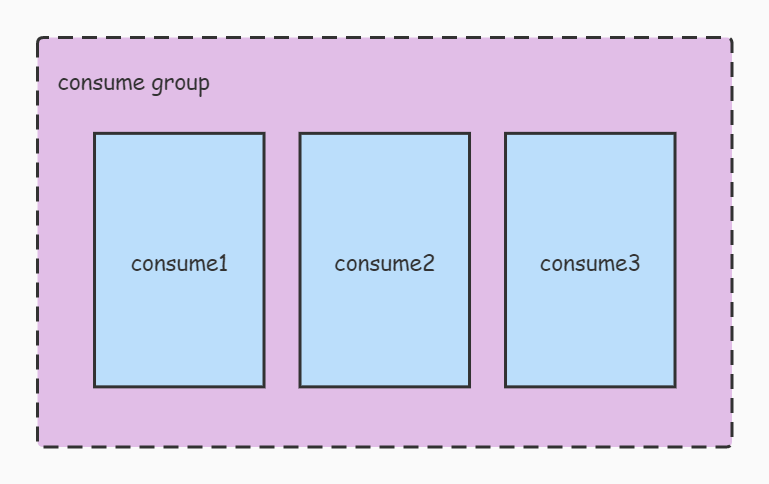
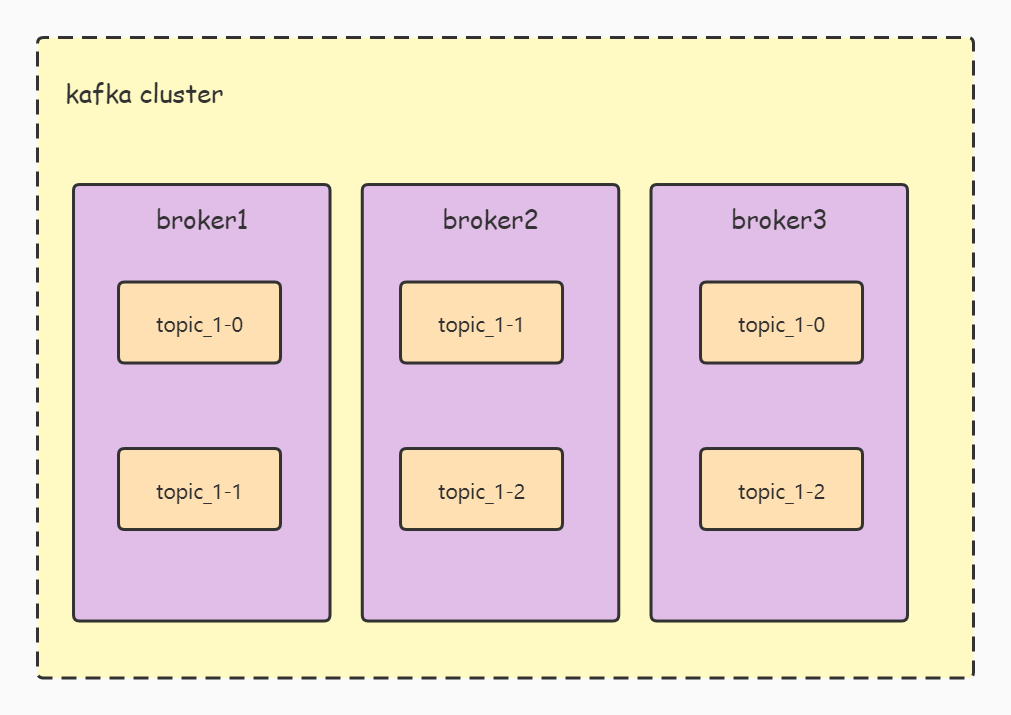
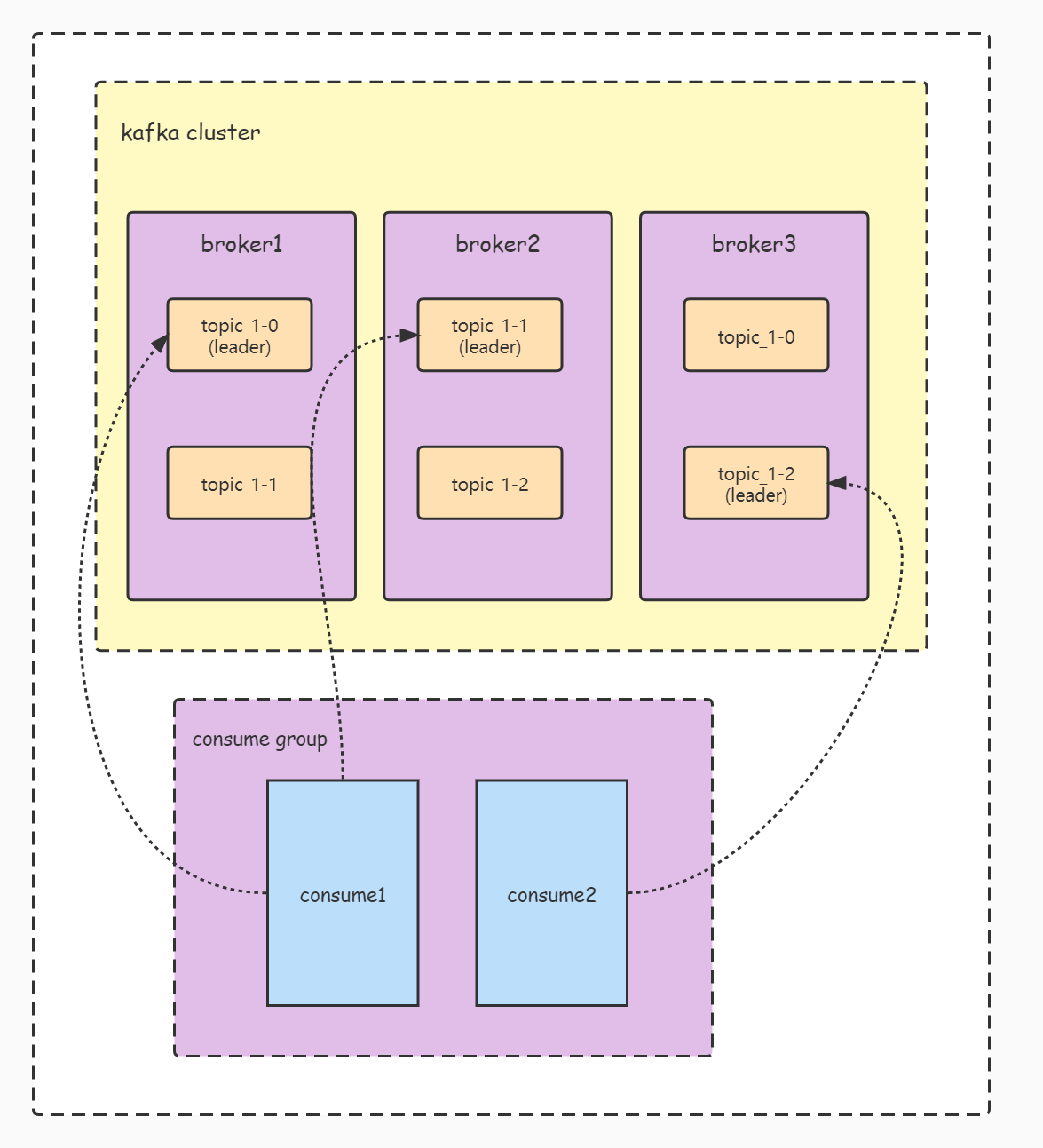
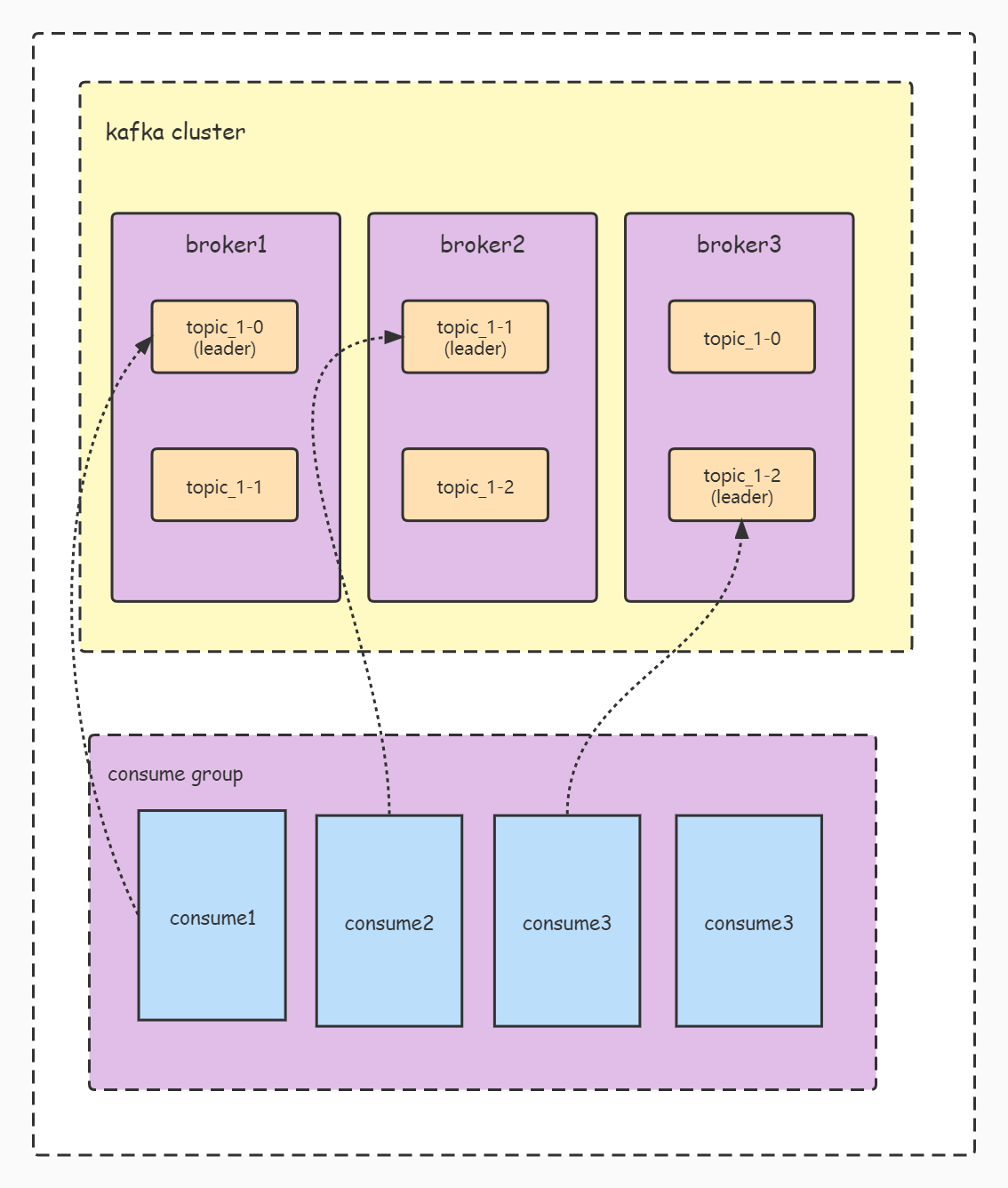
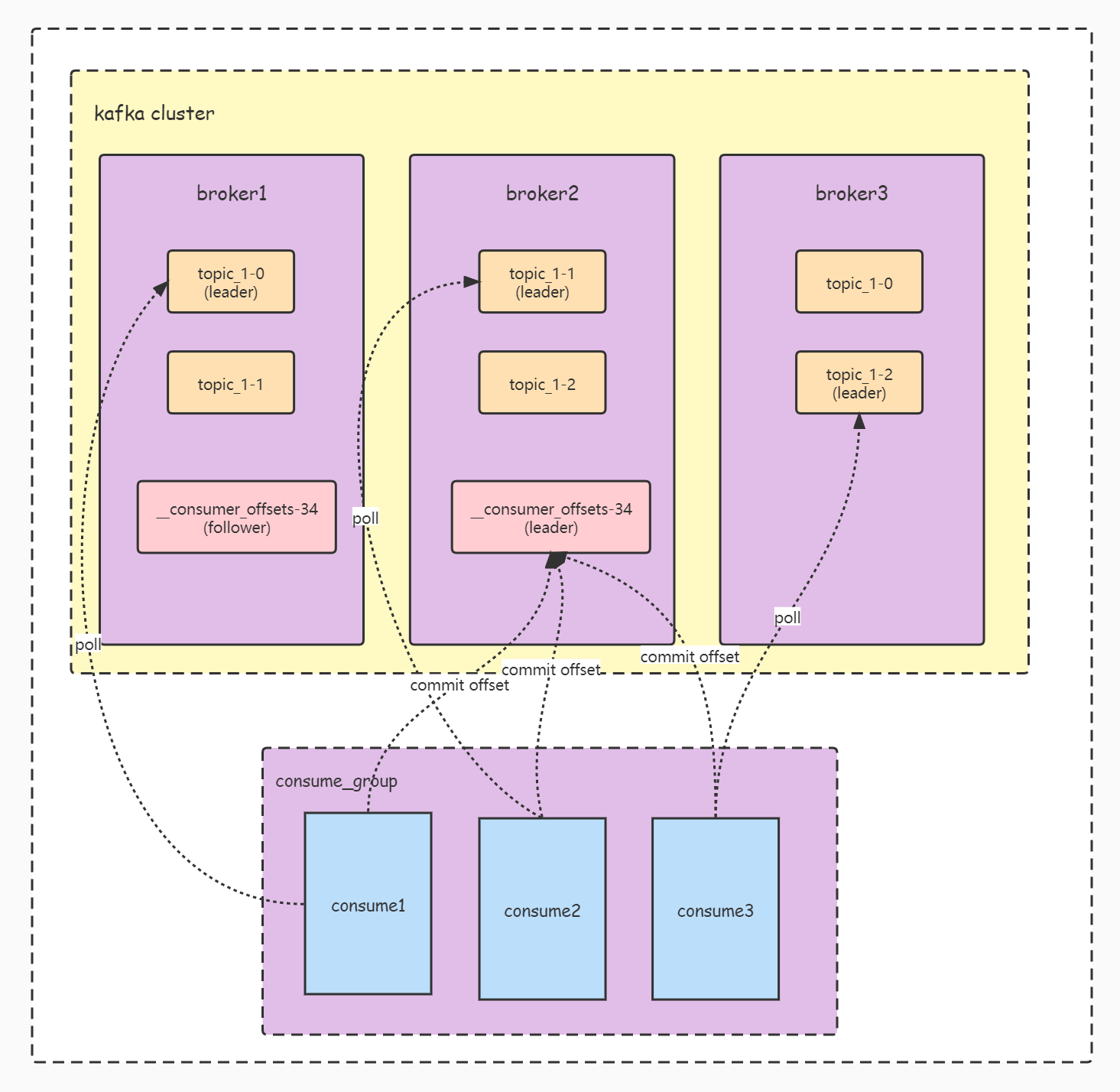

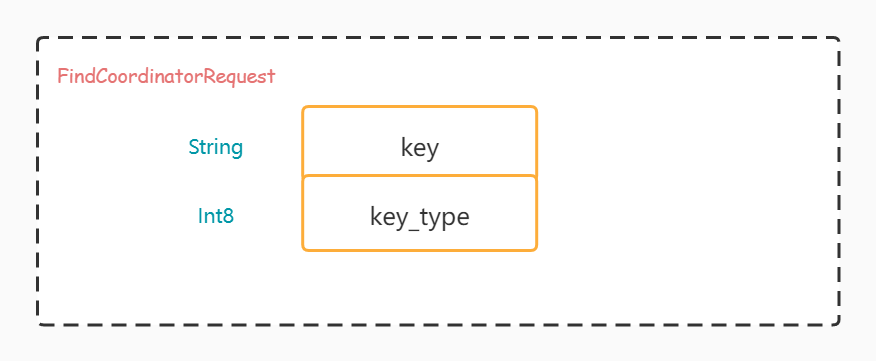


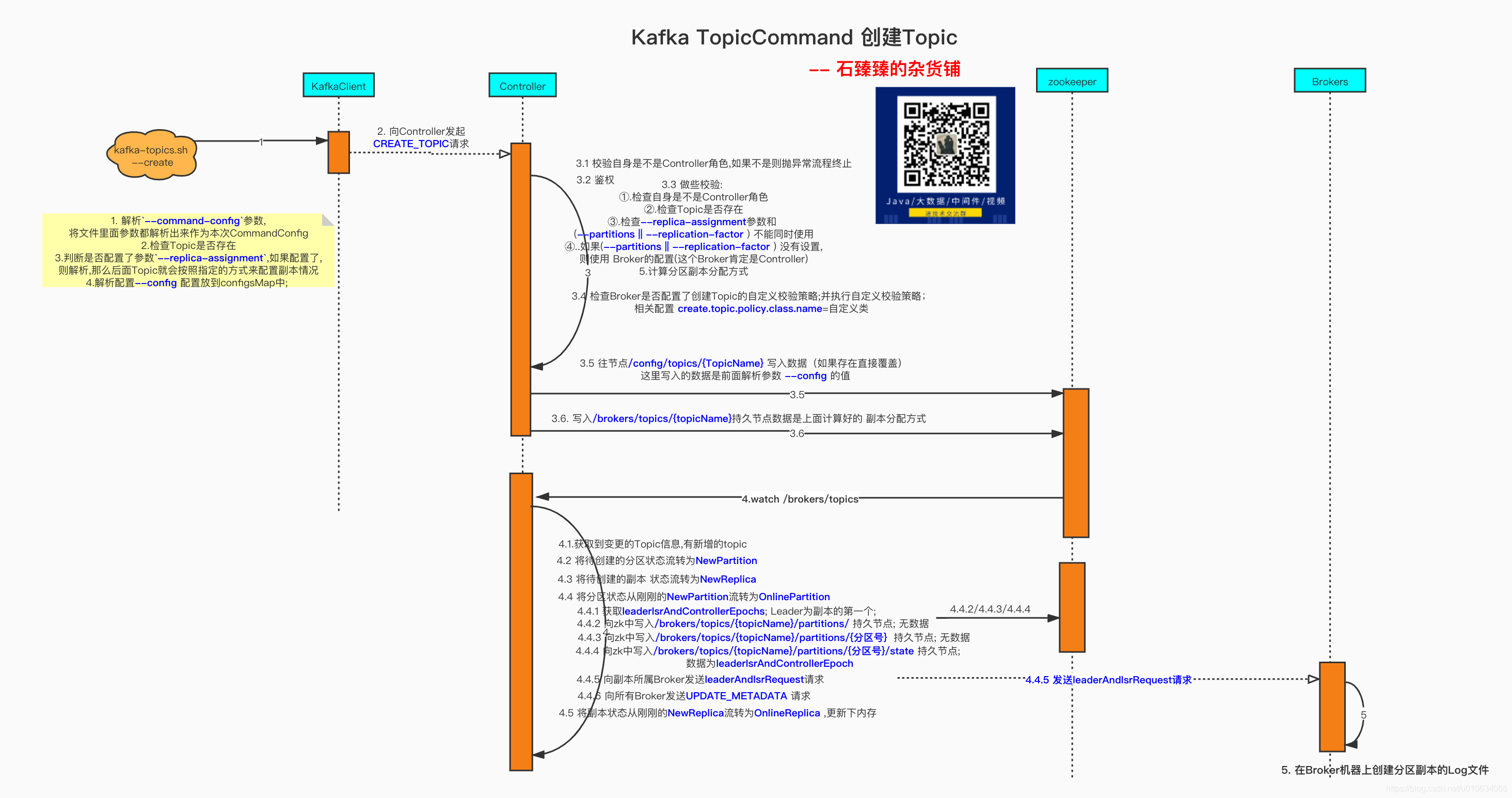
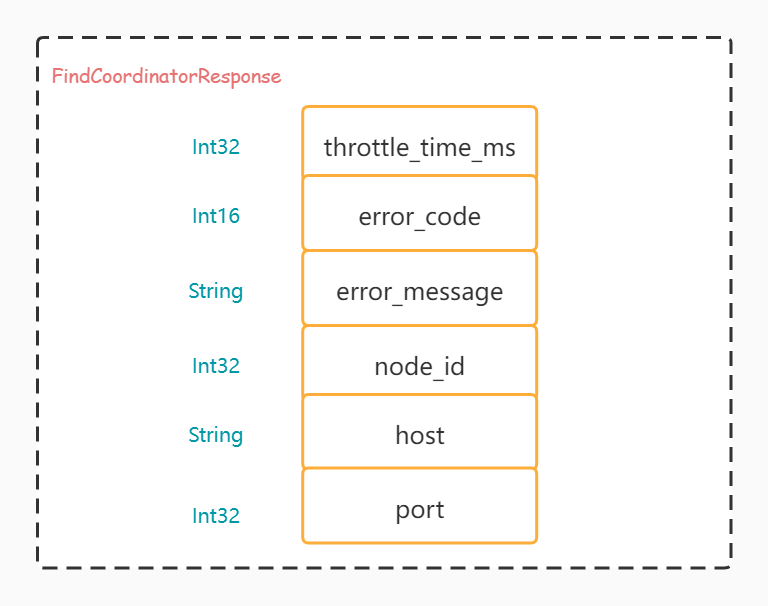










评论